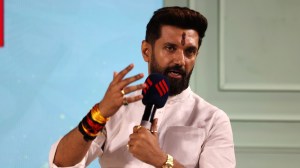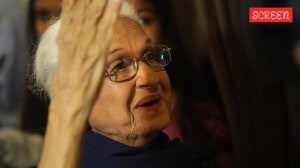First IPL: Money, glamour & triumph of underdog
First IPL would be remembered for triumph of underdog wherein a spin legend inspired the cheapest franchisee to title win.

Despite its share of controversies and the heady mix of glamour and cricket, the Indian Premier League’s first edition would be best remembered for the triumph of the underdog wherein a retired spin legend inspired the cheapest franchisee of the event to an unexpected title win.
Shane Warne, considered by many as the best captain that Australia never had, showed just how much more the team Down Under would have gained from him by leading a pack of unheralded players to a Rs 4.8 crore prize cheque, thus rounding off 44 days of a soap opera that had everything — from drama to emotion — for prime-time viewers.
An idea that many said was born out of the BCCI’s need to counter the rebel Indian Cricket League, IPL was a success story even before a ball was bowled when sponsors and TV channels queued up to get a stake in what was to become one of the richest domestic leagues in any sport.
And when it actually took off, Lalit Modi’s brain child only grew bigger with fans readily lapping up the idea of city-based rivalries even if that meant cheering the dismissal of perhaps their most revered icon Sachin Tendulkar.
The cricket dished out was equally exciting and the foreign recruits along with some exciting new Indian faces enthralled the packed stadias of the eight cities where the franchises were based.
An unheralded and unassuming Shaun Marsh, son of Australian great Geoff Marsh, became the most successful batsman of the tournament and the left-hander was the undisputed choice for the Orange Cap, meant for the event’s highest run-getter, with 616 runs.
Sohail Tanvir — the wrong-footed pacer from Pakistan — competed with the likes of Glenn McGrath and Muttiah Muralitharan to take the purple cap for the top wicket-taker with 22 wickets.
The Bollywood stars added their own charm to the event with Kolkata owner Shah Rukh Khan and Kings XI Punjab stakeholder Preity Zinta being the most visible faces.
Australia’s Shane Watson, who played a key role in Rajasthan Royal’s title triumph, was declared the man of the tournament with 474 runs, including four half centuries, and 17 wickets.
The razzmatazz notwithstanding, not all was hunky-dory with the tournament and some ugly on-field and off-field spats made as many headlines as the cricketing action.
The ugliest perhaps was the Harbhajan Singh-S Sreesanth slapping row. Playing for rival teams Mumbai Indians and King XI Punjab, Harbhajan slapped Sreesanth after losing a match and ended up incurring a Rs 3 crore fine and a ban from the entire tournament.
The episode threatened to snowball into a crisis and there were whispers that it may end up spoiling the dressing room environs of Team India, but the players involved in the row made sure that it did not go out of hand by letting bygones be bygones and embracing each other publicly after a disciplinary hearing.
No less bad was Vijay Mallya’s feud with his own team — Royal Challengers Bangalore — after it began to be ridiculed as a Test team following loss after loss.
Rahul Dravid, the skipper of the team, maintained a stoic silence even as Mallya went about sacking the team’s CEO Charu Sharma and lambasting Dravid for recruiting players who were not suited to the Twenty20 format of the game.
It is another matter that at the start of the tournament, Mallya had said he was satisfied with the choices made.
Then there were embarrassing reports of the ill-treatment of fringe players in Kings XI and Kolkata.
While, Kings XI asked theirs to vacate five-star hotels to accommodate more high-profile friends of their Bollywood star owner, Kolkata told theirs to go back home after they failed to fit into the scheme of things of coach John Buchanan.
In another controversy, the scantily clad cheerleaders invited the ire of the moral brigade in Mumbai and Kolkata, which threatened to disrupt matches if the girls did not cover up.
The ladies were only too willing to oblige and were happy to put on more clothes to respect the local sentiments and perhaps also escape some nasty comments thrown at them during their performances.
But amid all this, the players made sure that attention never wavered from the cricket.
Stunning hundreds were scored and the 39-year-old Sanath Jayasuriya, who hit 36 sixes in 14 innings, showed just why age has got nothing to do with a player’s success in the shortest format of the game.
On the downside, some of Indian cricket’s biggest names, who were sold for record amounts, failed to live up to the expectations.
Sachin Tendulkar, the icon player and the captain of Mumbai Indians, sat out of almost half the tournament because of a nagging groin injury and failed to make any major impact with the bat once he came back.
Mahendra Singh Dhoni, icon of Chennai team and bought for a whopping Rs six crore, was not exactly a failure but did not come up with anything dazzling either to justify his price.
Yuvraj Singh, although in good touch, could not produce the kind of fireworks that Brendon McCullum gave the tournament at the start.
Rahul Dravid was left to shoulder the entire burden of Bangalore’s batting as everyone around him failed, but managed moderate success before admitting that perhaps he could have done better had he been 21.
Sourav Ganguly, Kolkata’s icon, though came good with both bat and ball but his team was undone by the elements in a couple of matches.
All in all, the IPL turned out to be a 44-day roller coaster ride for the fans who enjoyed the game’s new avatar but more importantly it became an unprecedented success for the BCCI, which is still counting the millions that have not stopped raining as yet.


- 01
- 02
- 03
- 04
- 05




























